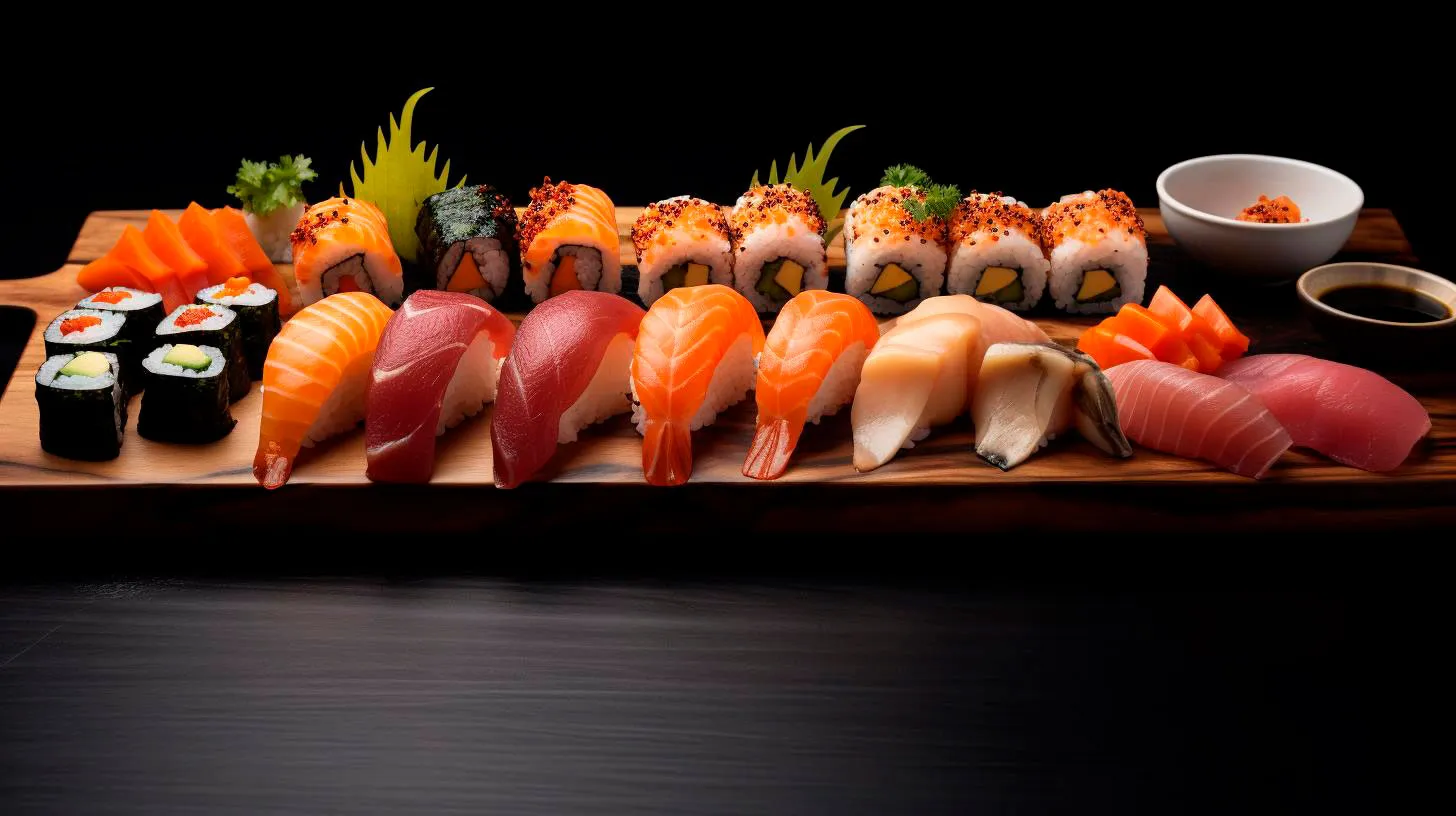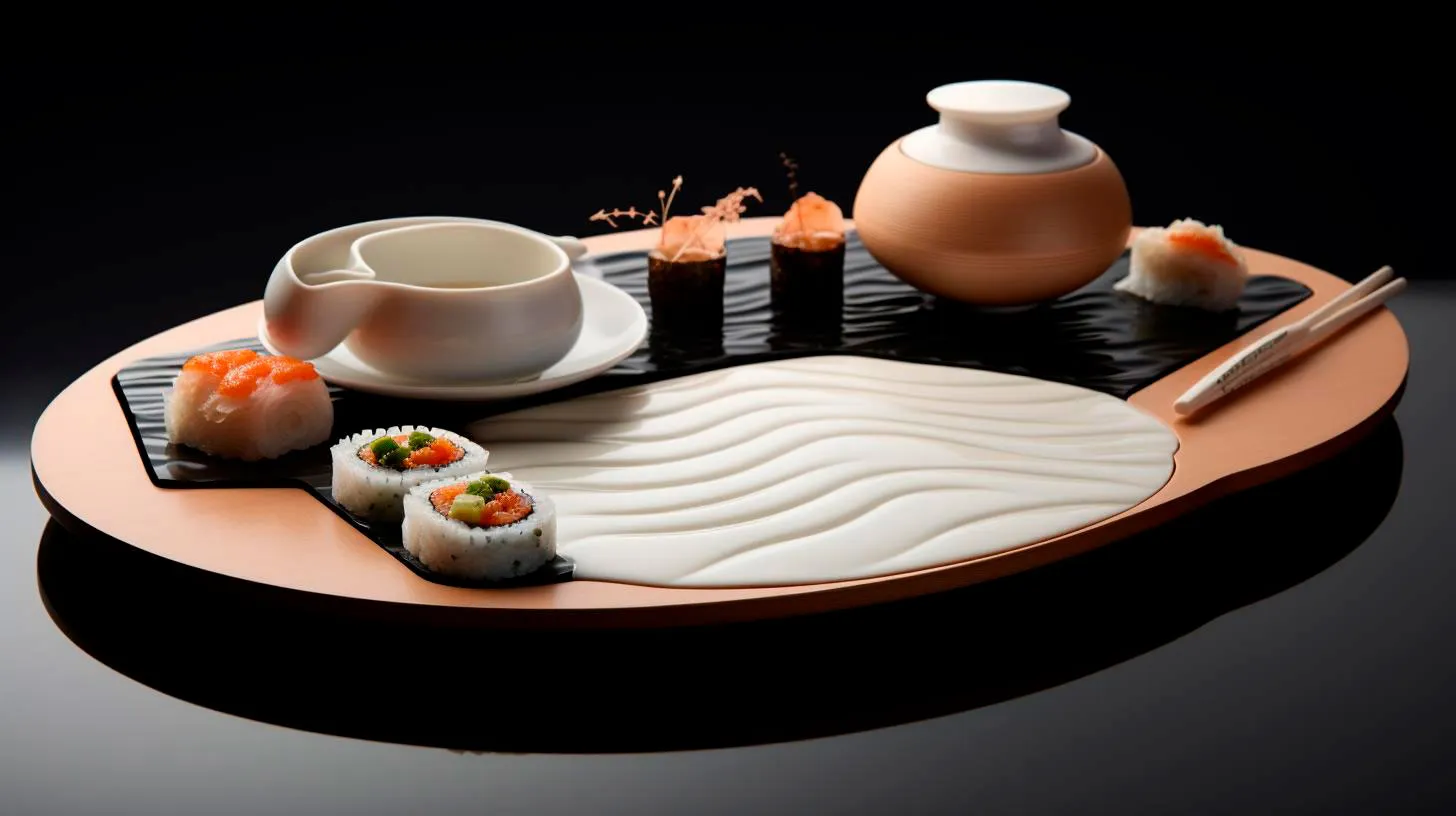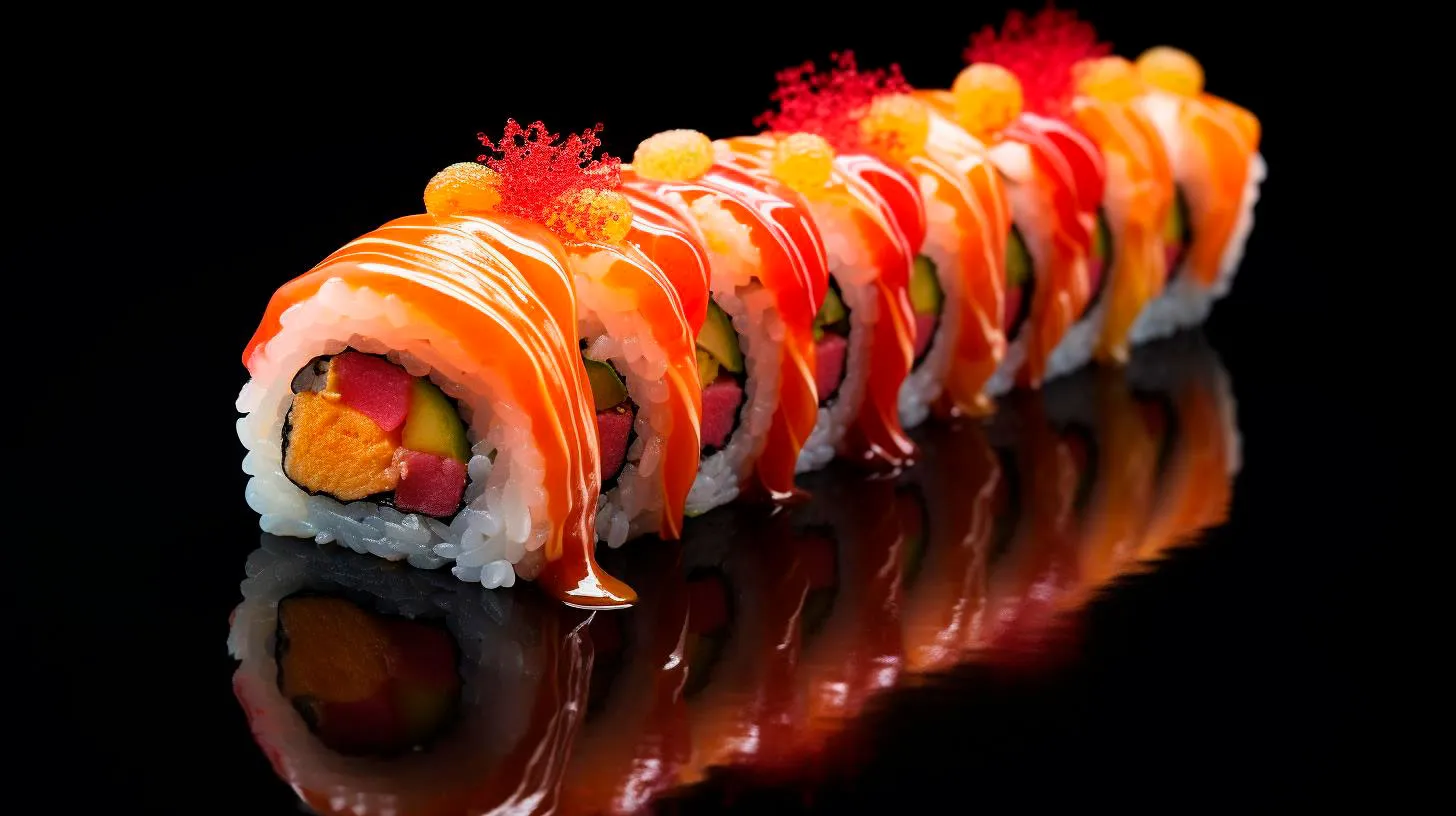How Sushi Knives Enhance the Texture of Your Sushi
While we often tend to focus on the freshness and flavor of the ingredients, the importance of a sushi knife in achieving the perfect texture is often overlooked.
Professional sushi chefs understand the significance of using the right knife to create the ideal texture, and for good reason. The quality and sharpness of the knife impact the way ingredients are cut and the precision in which they are handled. In this article, we delve into the world of sushi knives and how they can contribute to enhancing the texture of your sushi.
Key Features of Sushi Knives
Before we explore the impact of sushi knives on the texture of the dish, let’s take a closer look at some of their key features:
- Sharpness: Sushi knives are crafted meticulously to ensure they are incredibly sharp. The fine edge slices through ingredients effortlessly, allowing for cleaner cuts without crushing or tearing.
- Blade Material: High-quality sushi knives are typically made from either stainless steel or high-carbon steel. Both materials offer excellent durability and precision for cutting intricate sushi rolls.
- Grind: The blade of a sushi knife usually has a single bevel grind. This unique feature ensures greater control and precision when slicing through delicate ingredients, resulting in improved texture.
- Handle Design: Sushi knife handles are carefully crafted for comfort and stability. Traditional Japanese sushi knives often feature a wooden handle called a “wa” handle, while Western-style sushi knives may have a more ergonomic handle design.
The Role of Sushi Knives in Texture Enhancement
Now, let’s explore how sushi knives directly impact the texture of your sushi:
1. Clean and Precise Cuts
The sharpness of a sushi knife allows for clean and precise cuts, minimizing damage to the delicate ingredients. The clean-cut slices ensure that the flavors from each component blend harmoniously, enhancing the overall taste of the sushi. Additionally, precise cuts lend an aesthetic appeal to the dish, making it visually appealing.
2. Thinner and Uniform Slices
Using a sushi knife facilitates the creation of thinner and more uniform slices. Slicing ingredients uniformly ensures that each bite of sushi offers a consistent taste and texture. Whether it’s the delicate slices of sashimi or the perfectly rolled maki, the uniformity achieved with a sushi knife improves the overall sushi experience.
3. Retention of Ingredient Integrity
When handled with care, a sushi knife helps to maintain the integrity of the ingredients. By effortlessly slicing through the ingredients without pressure or crushing, the flavors and textures of the fish, vegetables, and seafood are preserved. This ensures that every bite of sushi provides the authentic and distinct flavors of each ingredient.
Advantages of Using Sushi Knives
Now that we understand the impact of sushi knives on the texture of sushi, let’s explore some advantages of using these specialized knives:
- Enhanced Precision: Sushi knives allow for greater control and precision, enabling chefs to create intricate designs and precise cuts.
- Time Efficiency: The sharpness and high-quality blade of a sushi knife ensure quick and efficient cutting, saving both time and effort.
- Durable and Long-lasting: Investing in a high-quality sushi knife ensures longevity and durability. With proper care and maintenance, sushi knives can serve you for years to come.
- Versatility: Sushi knives are not only limited to sushi making; they can be used for various food preparation tasks such as slicing vegetables, fruits, and other meats.
Key Takeaways
The art of sushi making requires precision, skill, and the right tools. Sushi knives, with their impeccable design and sharpness, undoubtedly enhance the texture of your sushi. Here are some key takeaways to remember:
- Invest in a high-quality sushi knife made from stainless steel or high-carbon steel with a single bevel grind for optimal results.
- Sharp sushi knives enable clean and precise cuts, resulting in a better blend of flavors and an aesthetically pleasing presentation.
- Using a sushi knife ensures uniform slices, contributing to a consistent taste and texture throughout the dish.
- Preserve the integrity of ingredients by using a sushi knife to minimize damage and retain the authentic flavors of each component.
So, the next time you indulge in sushi, appreciate the role of a well-crafted sushi knife that goes beyond the art of cutting and influences the texture and overall experience of this revered Japanese delicacy.
The Benefits of Using Specialized Sushi Knives
Key Takeaways:
- Specialized sushi knives are specifically designed for sushi preparation, ensuring precision and efficiency.
- Using the right sushi knife enhances the taste and presentation of sushi.
- The unique design and materials used in sushi knives contribute to their durability and longevity.
- Proper maintenance and care of sushi knives are essential to extend their lifespan and maintain their performance.
Precision and Efficiency
One of the key benefits of using specialized sushi knives is the precision and efficiency they offer. Sushi-making requires intricate cuts and precise techniques, and using a regular kitchen knife can make it difficult to achieve the desired results. Sushi knives, on the other hand, are specifically crafted with sharp, thin blades that allow for effortless slicing and dicing. The lightweight design of these knives also enables swift and accurate movements, making the process of preparing sushi much easier and enjoyable.
Advantages:
- Sharp, thin blades for precise cuts.
- Lightweight design for swift and accurate movements.
- Efficient sushi preparation with minimal effort.
Taste and Presentation
Specialized sushi knives not only enhance the efficiency of sushi preparation but also greatly contribute to the taste and presentation of the final dish. The sharpness of these knives allows for clean cuts that preserve the delicate texture and flavors of the ingredients. The precise cuts also ensure even distribution of the ingredients, resulting in a sushi roll that not only tastes great but also looks visually appealing. By using the right sushi knife, you can elevate your sushi-making skills and impress your guests with beautifully presented and delicious sushi creations.
Advantages:
- Clean cuts preserve the delicate texture and flavors of ingredients.
- Even distribution of ingredients enhances the taste.
- Visually appealing sushi rolls that impress guests.
Durability and Longevity
Investing in specialized sushi knives is a wise decision due to their durability and longevity. These knives are typically made from high-quality materials such as Japanese stainless steel, which is known for its strength and resistance to corrosion. The unique design and construction of sushi knives make them highly durable, allowing them to withstand the demands of regular sushi preparation. With proper care and maintenance, a well-crafted sushi knife can last for many years, making it a valuable long-term investment for any sushi enthusiast.
Advantages:
- High-quality materials ensure strength and resistance to corrosion.
- Durable construction withstands regular sushi preparation.
- Long lifespan with proper care and maintenance.
Proper Maintenance and Care
To ensure the longevity and performance of your specialized sushi knives, proper maintenance and care are crucial. Here are some key tips to keep in mind:
1. Handwashing:
Avoid putting sushi knives in the dishwasher as the harsh detergents and high heat can damage the blade. Instead, wash them by hand using mild soap and warm water.
2. Sharpening:
Regularly sharpen your sushi knives to maintain their sharpness and precision. Utilize a sharpening stone or a honing rod specifically designed for sushi knives.
3. Storage:
Store sushi knives in a knife block or sheath to protect the blade from damage and to prevent accidents when reaching for other utensils.
4. Avoid Frozen Ingredients:
Avoid using sushi knives on frozen ingredients as the extreme hardness can damage the blade. Thaw the ingredients properly before use.
By following these maintenance practices, you can extend the lifespan of your sushi knives and ensure they perform optimally throughout their usage.
Using specialized sushi knives can truly make a difference in your sushi-making endeavors. The precision, taste, and presentation they offer are unparalleled, elevating your culinary skills and creating a delightful dining experience. Investing in a high-quality sushi knife and giving it the care and attention it deserves will not only enhance your sushi creations but also make you appreciate the art of sushi preparation at a whole new level.
Exploring the Relationship Between Sushi Knives and Culinary Artistry
The Role of Sushi Knives in Culinary Artistry
Sushi knives are more than just ordinary kitchen tools. They are an essential part of the culinary artist’s arsenal, allowing chefs to bring their artistic vision to life when crafting sushi masterpieces. Here’s a closer look at the role sushi knives play in culinary artistry:
- Precision: Sushi knives are designed with utmost precision in mind. They allow chefs to achieve delicate and precise cuts, ensuring the perfect slice every time. The intricate blade construction, along with the razor-sharp edge, enables chefs to showcase their culinary expertise.
- Control: Sushi knives provide chefs with unparalleled control over their cuts. Whether it’s the thickness of the fish or the size of the roll, chefs can tailor their creations to meet their artistic vision. The ergonomic design of sushi knives allows for optimal grip and maneuverability, ensuring chefs have complete control over their movements.
- Presentation: Sushi making is not just about taste; it’s a visual art form. Sushi knives allow chefs to create stunning presentations by meticulously slicing and arranging ingredients. The clean and precise cuts achieved by using sushi knives contribute significantly to the overall aesthetics of the dish.
- Efficiency: Sushi chefs often work in high-pressure environments, where speed and efficiency are paramount. Sushi knives are designed to facilitate swift and seamless cutting, allowing chefs to keep up with demanding service times without sacrificing quality.
Types of Sushi Knives
Sushi knives come in various shapes and sizes, each serving a specific purpose in the sushi making process. Here are some of the most commonly used types:
- Yanagiba: The yanagiba knife, also known as the sashimi knife, features a long, thin, and single-edged blade. It is primarily used for slicing fish and creating smooth, clean cuts.
- Usuba: The usuba knife is a traditional Japanese vegetable knife with a thin, rectangular blade. It is perfect for precise vegetable slicing, including cutting intricate garnishes and decorations for sushi.
- Deba: The deba knife is a heavy, thick-bladed knife primarily designed for filleting fish and butchering. It excels in cutting through cartilage and fish bones, making it an essential tool for sushi chefs.
- Takohiki: The takohiki knife is a variation of the yanagiba knife with a squared-off tip. It is commonly used for slicing octopus, but also works well for other ingredients and filleting fish.
Key Takeaways
Understanding the relationship between sushi knives and culinary artistry is crucial for any sushi enthusiast. Here are the key takeaways to keep in mind:
- Choose the right knife for the task at hand to ensure precise cuts and desired results.
- Invest in high-quality sushi knives crafted from premium materials for optimal performance and durability.
- Maintain and sharpen your sushi knives regularly to retain their sharpness and longevity.
- Practice proper knife handling techniques to ensure your safety and the longevity of the knife.
- Allow your creativity to shine by experimenting with different knife techniques and presentation styles.
As sushi making continues to gain popularity worldwide, the importance of sushi knives in culinary artistry remains undeniable. By understanding the different types of sushi knives, their advantages, and key takeaways, you can embark on a journey towards becoming a true sushi artist. So, sharpen your knives, practice your skills, and let your culinary creativity flourish!
The Role of Sushi Knives in Elevating Flavor Profiles
Sushi knives, also known as yanagibas, are delicately crafted to slice through raw fish with ease, precision, and finesse. These specialized knives are made using traditional Japanese techniques that have been perfected over centuries. Their unique design and exceptional sharpness allow sushi chefs to execute precise cuts to highlight the flavors and textures of the ingredients.
The Anatomy of a Sushi Knife
A typical sushi knife consists of the following key components:
- Blade: The blade of a sushi knife is long, narrow, and single-edged. It is made from high-quality carbon steel, ensuring durability and sharpness.
- Handle: The handle, known as the “wa” handle, is traditionally made from wood and shaped in a cylindrical or octagonal form. It provides a comfortable grip and excellent control during slicing.
- Tang: The tang refers to the part of the blade that extends into the handle, providing stability and balance.
The Importance of Sushi Knife in Flavor Enhancement
Investing in a high-quality sushi knife can significantly impact the flavors and overall experience of enjoying sushi for several reasons:
Precision and Clean Cuts
Sushi knives are designed to make clean, precise cuts through raw fish and other ingredients. The single-edged blade allows chefs to exert minimal pressure while maintaining control over the slicing process. This technique prevents the ingredients from being crushed or torn, preserving their natural flavors and textures.
Enhancing Ingredient Aromas
When ingredients, such as fish or vegetables, are cut with a sushi knife, the clean and precise slice helps release their natural aromas. This release of fragrances intensifies the overall flavor profile of the sushi, making it more enticing to the senses.
Promoting Proper Texture
The sharpness of a sushi knife ensures that each slice is smooth and even. When the fish or other ingredients are cut cleanly, they maintain their distinct textures. This careful preservation of texture allows the flavors to unfold in the mouth, providing a delightful sensory experience.
Efficiency and Time-saving
Sushi knives’ exceptional sharpness and design enable sushi chefs to work efficiently, ensuring that each cut is swift and accurate. This helps save valuable time in the preparation process, particularly in high-demand sushi restaurants, where speed and precision are essential.
The Perfect Tool for Sushi Enthusiasts
While sushi knives are an indispensable tool for professional sushi chefs, they are also an excellent addition to the kitchen of sushi enthusiasts. With the right sushi knife, you can elevate your home sushi-making experience, creating restaurant-quality dishes. Some key takeaways for sushi enthusiasts include:
- Invest in a high-quality sushi knife to ensure precision and control while slicing ingredients.
- Respect the craftsmanship of the knife by properly maintaining and sharpening it.
- Experiment with different types of sushi knives to understand the nuances they bring to specific ingredients.
- Improve your sushi-making skills by practicing various cutting techniques.
As sushi continues to capture the hearts and taste buds of people worldwide, understanding the role of sushi knives in flavor enhancement becomes crucial. By embracing the art of sushi making and appreciating the craftsmanship behind these knives, you can embark on a culinary journey that delights both your palate and those of your guests.


